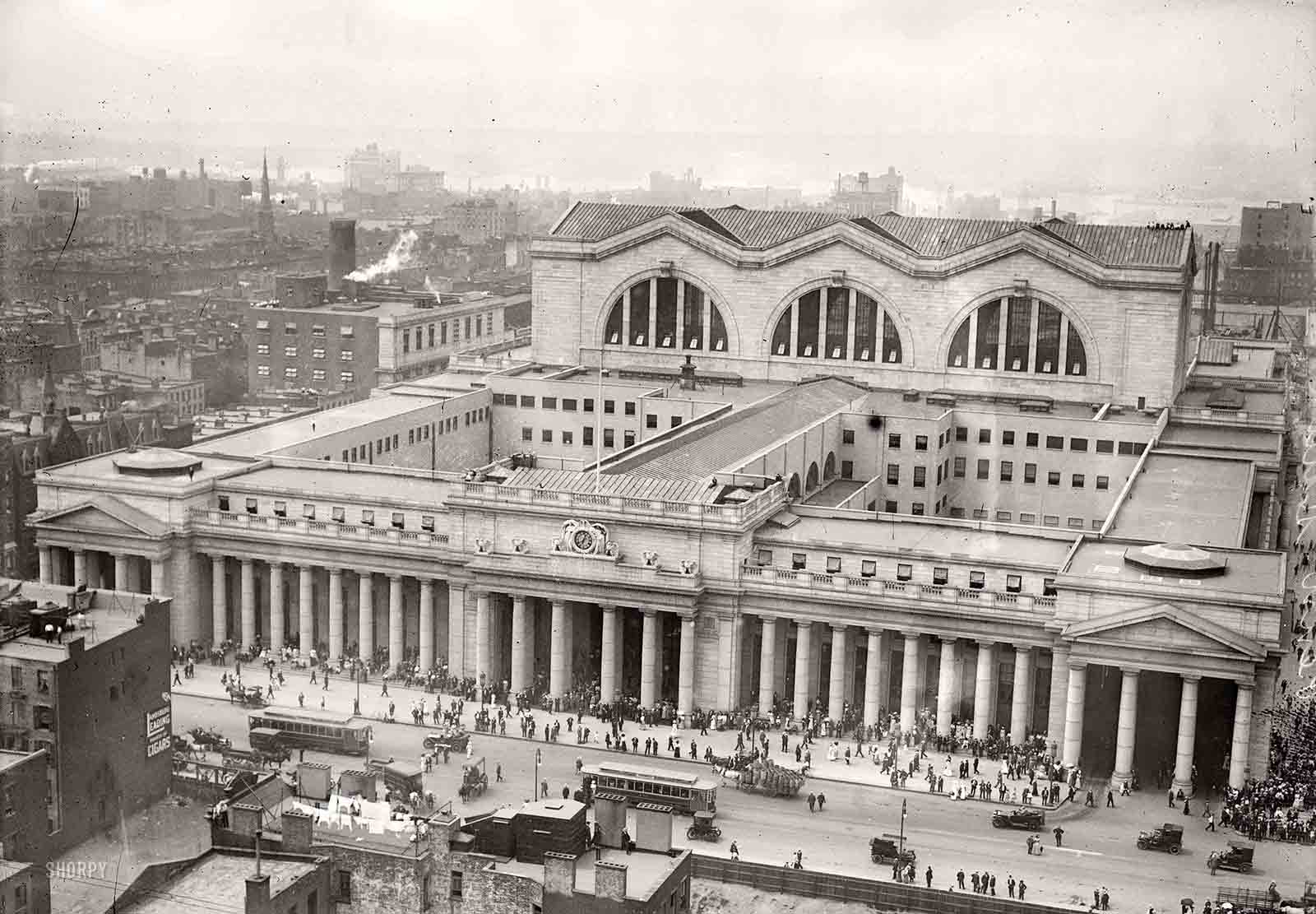
Penn Station, a bustling nexus in the heart of New York City, stands as the busiest commuter hub in North America. It’s more than just a train station; it’s a complex ecosystem where three major passenger railroad lines – Amtrak, New Jersey Transit (NJT), and the Long Island Rail Road (LIRR) – converge, creating a constant flow of people and energy. Beyond its rail connections, Penn Station seamlessly integrates with the city’s vast subway network, offering access to Penn Plaza, the iconic Madison Square Garden, and the vibrant shopping district of Herald Square, all within a comfortable walking distance.
Navigating the Labyrinth: Access and Entrances
Finding your way into Penn Station is relatively straightforward, given its multiple access points. The primary entrance, a familiar sight to countless commuters and tourists, is situated on 7th Avenue, nestled between 31st and 33rd streets. However, the station’s accessibility extends far beyond this main entrance. The city’s subway system provides direct access through stations at 34th Street and 7th Avenue, as well as 34th Street and 8th Avenue. This underground connection offers a convenient route for those arriving via subway.
It is important to note that Penn Station never closes. The constant need for transport makes it a 24/7 operation.
A significant addition to the Penn Station complex is the recently opened Moynihan Train Hall, located across the street between 31st and 33rd streets. This modern hall serves Amtrak and Long Island Railroad passengers, offering a more spacious and aesthetically pleasing environment. However, passengers should be aware that tracks 1 through 4 remain accessible only through the original Penn Station location.
Reaching Penn Station: A Multitude of Options
The accessibility of Penn Station is one of its greatest strengths, offering a variety of transportation options to suit every traveler’s needs.
Subway: The subway system provides the most direct and convenient access to Penn Station. Several lines converge at or near the station, ensuring a relatively seamless transfer.
- 1, 2, and 3 trains: These lines provide a direct connection to the station at the 34th Street and 7th Avenue stop, depositing passengers right at the heart of the Penn Station complex.
- N, Q, and R or B, D, F, and M trains: These lines stop at 6th Avenue and 34th Street, near Macy’s and Herald Square, requiring a short walk to Penn Station.
- A, C, and E trains: These lines connect to 34th Street and 8th Avenue, providing underground access to Penn Station.
- 7 train: This line terminates at 34th Street in nearby Hudson Yards, requiring a slightly longer walk to Penn Station.
Bus: While the subway offers the most comprehensive access, the bus system also provides a direct connection.
- M34 Bus: The M34 is the only MTA city bus that connects directly to Penn Station.
The Railroad Trio: Amtrak, NJ Transit, and LIRR
Penn Station is the New York City hub for three major rail operators, each catering to different destinations and travel needs:
- Amtrak: Amtrak provides both short- and long-distance travel options, connecting New York City to destinations throughout the United States and Canada. Popular routes include Montreal, Boston, Albany, and Philadelphia.
- New Jersey Transit (NJT): NJ Transit trains offer convenient access to various destinations across New Jersey, including Newark Liberty International Airport.
- Long Island Rail Road (LIRR): The Long Island Rail Road is the busiest commuter railroad in North America, operating over 700 trains daily and transporting over 300,000 passengers to and from various points across Long Island.
The LIRR from Penn Station also provides access to Jamaica Station, which in turn connects to John F. Kennedy International Airport (JFK) via the AirTrain. The A and C subway lines also offer access to JFK. It’s important to note that Penn Station does not have direct access to LaGuardia Airport (LGA).
Decoding the Station: Layout and Levels
Navigating the sprawling complex of Penn Station can be daunting, especially for first-time visitors. Familiarizing yourself with the station’s layout before your trip can significantly reduce stress and prevent missed trains. The station comprises two primary levels above the train platforms in the original building: the upper and lower concourses. Both concourses are accessible via elevators, escalators, and stairs. The Moynihan Train Hall consists of an upper level and a street level.
A Glimpse into the Past: History and Transformation
The original Penn Station, a Beaux-Arts masterpiece designed by the renowned architectural firm McKim, Mead, and White, opened in 1910. It was celebrated as a "pink marble architectural masterpiece" and served as a major transportation hub for over half a century. However, with the rise of air travel, train ridership declined, leading to the demolition of the original Penn Station in the 1960s to make way for the construction of Madison Square Garden and a new, smaller Penn Station.
The demolition of this architectural gem sparked public outrage and is widely considered a catalyst for the modern historic preservation movement in New York City. In 2018, construction began on a new train station within the landmark Farley Post Office Building, also designed by McKim, Mead, and White. The new station, named Moynihan Train Hall in honor of the late New York Senator Daniel Patrick Moynihan, opened in 2021. The hall’s main waiting area occupies the building’s former mail-sorting room, featuring soaring 92-foot high ceilings and a stunning glass atrium that floods the space with natural light. Future plans include the development of a food court and the construction of new western train tunnels.
